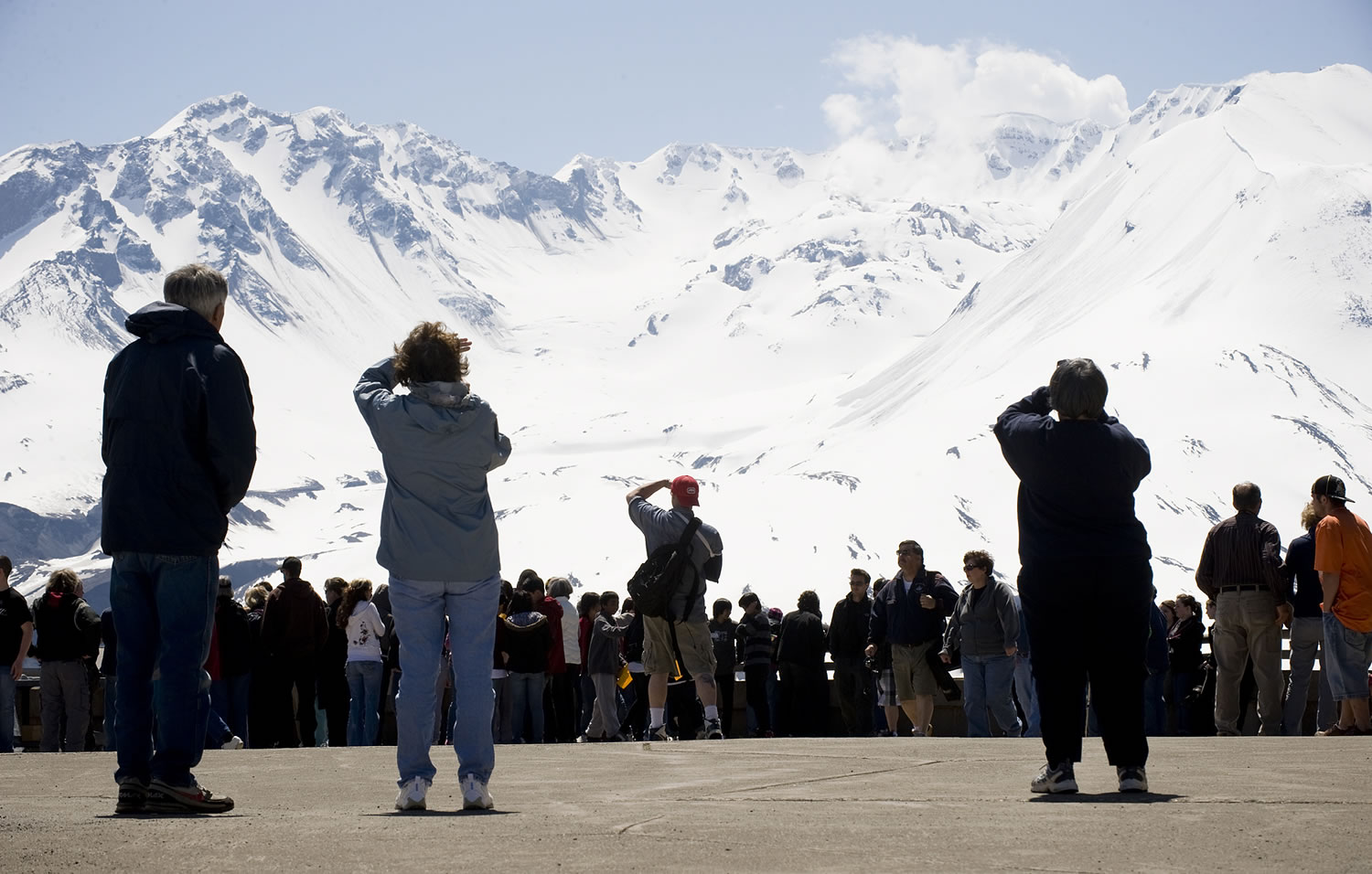It’s not anything to panic about, but geologists have tracked an interesting cluster of small earthquakes near Mount St. Helens through the month of August.
The cluster, which included 3.7, 3.4 and 3.1 magnitude quakes on Aug. 23, started on Aug. 2 with a 3.1 magnitude quake, said Seth Moran, a seismologist with the Cascades Volcano Observatory.
“These earthquakes are occurring at about 12 miles northwest of Mount St. Helens at a depth of about 10 miles,” Moran said. “We had (quakes lower than magnitude 3) occurring as often as a couple a day for a few weeks.”
The observatory reported about 120 earthquakes in total since the swarm began on Aug. 2.
People in Battle Ground reported feeling the 3.7 on Aug. 23, but since then things have tapered off. The last measurable quake was an 0.6 magnitude on Aug. 27, Moran said.
The quakes are related to faults in the Earth’s crust and not to the volcano. There are many small fractures in the crust related to plate tectonics and the Cascadia subduction zone, where the Juan de Fuca plate is sliding beneath the North America plate.
“The context for this is that earthquakes have occurred in that area for centuries,” he said. “But the thing about these that’s a little unusual is the sequence of earthquakes. Usually the largest one is first, but this time the largest one came a few weeks after the first one.”
That phenomenon is unusual but not unprecedented.
“It’s just the Earth around us is moving and patches of rock are bumping and grinding against each other,” Moran said.
Magma movement in Mount St. Helens only appears to cause seismic activity up to about 5 miles away from the mountain, and usually it’s only within a mile or so, he added.
Similar activity has been recorded on the south side of Mount Hood this week, with 16 small earthquakes located in the Government Camp and Barlow Pass areas. The largest was a magnitude 2.0 quake on Monday, according to the USGS.
The August cluster of earthquakes near Mount St. Helens appear to be mostly finished, Moran said.
“For the time being it’s looking like its tapering off,” Moran said. “With these sequences, once they’re done usually they don’t start up again for a long time. That could be what we’re seeing in this micro-zone.”
Sue Vorenberg: 360-735-4457; http://twitter.com/col_SueVo; sue.vorenberg@columbian.com.



